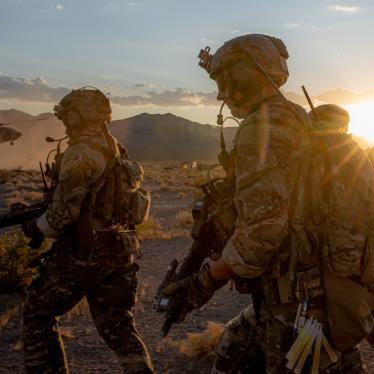19 October 2022
Modern Technology Solutions to Address Gaps in Service Member Training
A Q&A with Army Lieutenant Colonel (Ret.) Stephen DeLellis, MPAS, PA-C, as part of the NC-COMP Member Spotlight Series originally published by RTI International
The strength of our Nation’s defense is dependent on the health, readiness, and preparation of our Service members. Continuous training and education are crucial to this success. However, it can be challenging to provide the knowledge and skills required of Service members, and to develop the ability and expertise required to fight, in a rapidly changing landscape.
In 2021, the Geneva Foundation helped to establish the North Carolina Center for Optimizing Military Performance (NC-COMP), which focuses on delivering solutions to enhance baseline physical and mental performance, maintaining resilience in multi-stressor environments, preventing injury, and speeding recovery. As a founding member of NC-COMP, Geneva helps synchronize military medical research and expands partnerships supporting research aimed at optimal warfighter readiness.
Senior Technical Advisor and Executive Director for Geneva’s Fort Liberty Research Institute (FLRI) Stephen DeLellis, PA-C, LTC (Ret.) has had a long and decorated military career spanning 36 years. Today, he guides FLRI’s important work supporting the operational needs of the warfighter.
Recently he shared his thoughts on warfighter readiness, training, rest, and recovery.
What is missing from current training and recovery for Service members in the U.S. military?
Using outdated technology. The Department of Defense (DoD) has relied on the same system of training for decades. Typically, entire units attend training presented by an instructor using a PowerPoint presentation or other simplistic format. Today, we have access to augmented, virtual, or mixed reality; more exciting formats to keep Service members engaged that would likely lead to better skill retention. Digital content could be loaded on a smartphone, laptop, or tablet, for Service members to view as time allows.
Why would this kind of training be valuable to the DoD?
There are pros and cons to training with both traditional and more modern methods. Having the entire unit in the same place, at the same time, ensures continuity and standardization. Everyone receives the same information at the same time, and potentially, all questions are answered by the instructor. However, on the future battlefield, a Commander may not have the opportunity to have everyone in a single location. There needs to be an option for quality education that can be securely disseminated to Service members regardless of location or available training time. Digital content can solve time/space constraints and can easily be updated whenever necessary.
How can utilizing modern technology also aid in rest and recovery for Service members?
Service members’ time is tightly controlled. Our warfighters are either training for war, deployed, or recovering. Rest is as important as training, and rather than solely relying on large-scale training events for entire units, allowing warfighters to complete less critical, but no-less important, training at their convenience allows time to be used more efficiently.
Additionally, the DoD is continually seeking better recovery methods for injured Service members. One of Geneva’s programs, the Musculoskeletal Injury Rehabilitation Research for Operational Readiness (MIRROR) program, specializes in return to duty rehabilitation techniques helping Service members recover after a musculoskeletal injury. A focus area of this program is the application of new technologies in preventative and rehabilitative care.
More on NC-COMP
Geneva is one of four founding members of NC-COMP along with the University of North Carolina System, the North Carolina Biotechnology Center, and RTI International. NC-COMP Members work collaboratively to address critical warfighter performance gaps.
Disclaimer: The views expressed do not reflect the official policy of the Army, the U.S. Department of Defense, or the U.S. Government. The appearance of U.S. Department of Defense visual information does not imply or constitute DoD endorsement.




